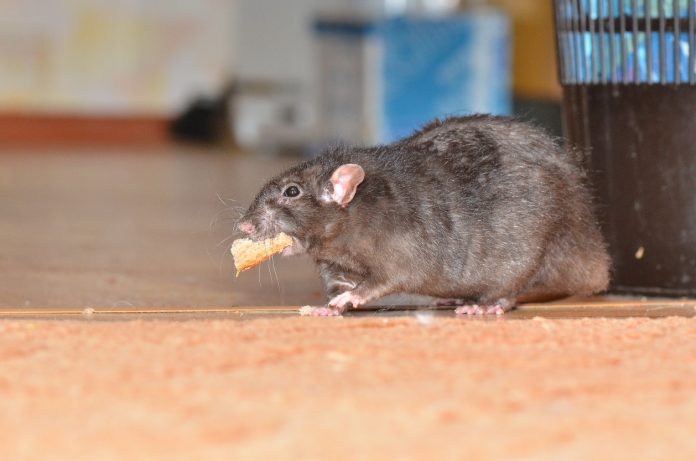
Pests, especially rodents, have gotten a lot of press in 2019. A quick Google search for news articles around rats and mice will reveal urgent headlines warning about the “ratpocalypse” or impending mouse invasions. But is it really something that hotel operators should put on their worry list?
The simple answer is yes – but there’s no need to panic.
Hoteliers have the upper hand in the fight against rodents. With a clear plan of action, every property can have an advantage in keeping rodents at bay as they head into the fall and winter months.
Rodents populations are actually booming in general. By some estimates, in the last decade, there’s been a 15 – 20 percent increase in urban rodent populations, especially in cities. That estimate is a call to action for hotel and lodging properties operating in urban areas, but the increase now applies large cities and small towns across North America to as far as Canada.
In 2018, Rentokil Steritech saw a 26.6 percent increase in the number of rodent infestation services it performed at hotels versus 2017, which is more than double the overall increase in rodent infestation services across all segments.
Why are there more rodents?
Most rodent experts agree that there are a few key reasons that rodents are more frequently invading human dwellings and spaces. Depending on the hotel’s location, some of these factors may contribute more than others.
● Construction. Particularly in cities where the cycle of building and demolition seems perpetual, construction can play a major factor in contributing to rodent activity. Construction can disturb areas where rodents may have been active but out of sight, sending them scurrying to new locations – which often include businesses and homes.
● Continued land development and population growth. Similar to construction, land development ousts wildlife and natural populations into new areas. As humans move to new areas, the potential for rodent issues to be imported with our goods and services also rises.
● Climate change and shifting weather patterns. A changing climate is continuing to have an impact on pest populations of all types – including rodents. Warmer temperatures year-round mean the pest breeding cycle lengthens and may prevent natural attrition during the winter. Increased rainfall, flooding, and other extreme weather events may also help to push rodent issues to new areas that could provide existing rodent populations with adequate conditions for survival.
● Human attention to structural and sanitation issues. More than any of these factors, general sanitation issues in living spaces and lack of structural integrity provides rodents with the perfect conditions to eat, hide, and thrive.
It’s the issue of sanitation and structural integrity that offers hoteliers the most opportunity to take assertive action to protect their properties from rodents.
Rodent populations can grow quickly – and with cool weather just around the corner, autumn is the time to take action and prevent them from ever gaining access to the property.
The 6-step rodent action plan.
Putting together a rodent protection plan can feel daunting to hotel owners and managers. While keeping properties safe from rats and mice does take effort, the process doesn’t have to be complicated, and effective preventative action can be simplified to 5 simple steps.
1. Seal gaps and openings on the exterior of the facility. The hardest part of any rodent protection plan is ensuring that the structure isn’t inviting rodents inside. Mice can squeeze through openings as small as ¼-inch, and rats don’t require much more. Put a thorough exterior inspection of the property on a routine maintenance checklist every quarter at a minimum. The inspection should include low areas, such as along the foundation, all the way up to the roof (many rodents are excellent climbers). Pay special attention to any area where pipes or cables enter the building; these openings are often neglected and give rodents a quick and easy entry to get inside. If the property has changed since last winter, remodeling, additions, and other changes can leave the property susceptible to rodents. During the inspection, focus on areas where changes have occurred. Construction, temperature changes, and time may reveal structural gaps that create rodent entry points. Seal any cracks, gaps, or holes you spot with pest-proof material such as 1/8-inch wire mesh, flashing, hardware cloth, or silicone sealant.
2. Be vigilant with vegetation management. Controlling vegetation around the property is one of the easiest ways to deter rodents and other pests. Create an 18-inch vegetation-free zone between structures and landscaping. Rodents love to hide under bushes and can burrow or find food in ground covering. Keep areas under shrubbery cleaned out, and consider using egg or lava rock instead of mulch and pine straw. Most importantly, trim trees so that they do not overhang or touch the building or the roof, as rodents will use them as a highway to the structure.
3. Manage trash closely! Dumpsters and compactors are often stuffed in the back corner or a parking lot, a back alley, or hidden by a fence and can be neglected. However, trash areas are a major rodent attractant, since they’re a smorgasbord of delectable treats for these enterprising pests.
Ensure that any trash leaving the building is always placed into sealed garbage bags, which should then be placed immediately into dumpsters or compactors directly. Don’t ever leave trash sitting on the ground, either to be “taken to the dumpster later” or within the trash area itself. Train employees to keep dumpster lids closed and emphasize the importance of keeping it contained.
Have trash picked up a minimum of weekly, especially during warmer temperatures. Clean dumpsters or have them replaced on a regular basis, and don’t forget to clean the dumpster pad as well!
Remind employees to report problems with dumpsters and compactors: ill-fitting lids, non-functioning compactors, holes in the dumpster, or any pest activity that they see in the area.
4. Keep doors closed. This is the simplest step to put into place. Rodents often gain access to buildings in the same way humans do, by walking through open doors. Remind employees not to prop access doors open when taking outside breaks or taking out the trash. Use signs to help prevent hotel guests from doing the same. If the hotel has a loading dock, keep rollup doors closed whenever they are not in use.
5. Have a contracted pest management company in place. Having a reliable pest management partner that knows the property and area is the most powerful weapon in the fight against rodents. A good pest management provider will be able to help spot issues that may be conducive to rodent activity before they become problems, provide honest recommendations to correct those issues, and actionable recommendations to remedy any issues.
Providers familiar with the hotel’s area may also be aware of external issues, whether they are environmental or situational (i.e., that the construction down the street has created rodent issues for neighboring businesses and that the property might need additional protection). Leverage online tools that the pest management provider has to help track rodent issues and activity. A strong pest management data tool will allow hierarchical access that can give individual location-level managers the ability to view service data from their property and enter corrective actions they have taken, while giving corporate or area level management the ability to monitor these actions or trend and track data across a group, region, or an entire organization.
6. Look at the property’s history. If the property has seen increased rodent activity this summer or the records show increased rodent activity in winter months, talk to a pest management provider about the need for additional rodent protection now. Don’t forget that as buildings and structures age, they become more prone to structural issues that may be conducive to rodent devices. The older the facility, the more you’re likely to see increased issues. Install additional rodent management devices to help monitor for activity. A program should be dynamic and device placement needs to match the risk and data. Some pest management companies now offer digital rodent monitoring that can alert you 24/7 to any rodent activity.
Implementing a rodent prevention plan.
Now is a great time to sit down with a pest management provider and discuss the steps to can take to rodent-proof the facility.
During this meeting, think about the property’s environment, what’s happening at neighboring properties, and any process or protocol changes have made at the hotel. This information can help a provider implement the best preventative measures for the property.
Moving through the 6-step plan, these questions can help further address potential rodent issues.
● Has there been unusual weather or flooding this year?
● Is there construction or renovation happening nearby (next door or up to a mile away)?
● Is it time for seasonal mowing in neighboring or adjacent fields?
● Is there a new neighbor on adjacent properties?
● Have our suppliers changed recently?
A rodent boom doesn’t have to spell doom for an operation. By paying close attention to the property’s operations and surroundings, working with a pest management provider, and implementing a 6-step plan, hotels can stay one step ahead of mice and rats this fall and keep guests, employees, and property safe from rodents.












